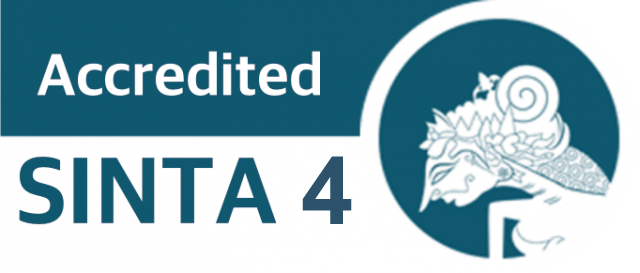Development of Interactive Media Based on Lectora Inspire Solar System (SITAYA) to Material to Increase Students Learning Motivation in Science
DOI:
10.29303/jpm.v20i6.10004Published:
2025-10-04Issue:
Vol. 20 No. 6 (2025)Keywords:
Interactive Media; Learning Motivation; Lectora Inspire; SITAYAArticles
Downloads
How to Cite
Downloads
Metrics
Abstract
Success in learning is important, not only influenced by student intelligence, but also by learning environment factors, motivation, learning styles, methods, strategies and learning media, these factors greatly influence student learning outcomes. This study aims to develop and test the feasibility and effectiveness of interactive learning media based on Lectora Inspire, specifically SITAYA (Solar System), in order to enhance the motivation and learning outcomes of sixth-grade students at SDN 4 Honggosoco in the Natural and Social Sciences (IPAS) subject, focusing on the solar system. The method used in this study is research and development, utilising the ADDIE model, which is simplified into five distinct stages. The validation process was conducted by media experts and material experts, resulting in assessments of 80% and 83.92%, respectively. This is supported by the results of student and teacher responses, with a percentage of 88.88% and 96.66%, respectively. Based on the results of the learning motivation questionnaire, it can be concluded that the category is very good, with a percentage of 98.8%. The effectiveness test, conducted using a one-group pretest-posttest design, showed a significant increase in the average score of students, from 42.61 to 83.65. The results of the paired t-test showed a significance value of 0.000 (<0.05), indicating a statistically significant increase. The N-gain calculation of 0.71 indicates a high level of effectiveness. SITAYA media is declared feasible and effective in supporting interactive and meaningful science learning. Additionally, SITAYA media is also highly effective in increasing student motivation and learning outcomes. These findings support the use of Lectora Inspire technology as an innovative solution in science learning at the elementary school level.
References
A. Suhendra, F. Rahman, and S. Adi, “Teams games tournaments: A cooperative learning strategy to improve students’ performance.,” J. Coop. Educ. Internships, vol. 57, no. 1, pp. 78–98, 2023.
Z. A. Oktaviani and V. Suprapti, “Pengaruh Psychological Well-Being terhadap Stres Akademik Siswa SMA di Masa Covid-19,” Bul. Ris. Psikol. dan Kesehat. Ment., vol. 1, no. 1, pp. 965–975, 2021, doi: 10.20473/brpkm.v1i1.27667.
R. A. Cahdriyana, R. Richardo, U. A. Dahlan, J. R. Selatan, U. A. Ata, and J. B. No, “Apakah konsep PROSPER dapat membangun kesejahteran siswa ( student well-being ) di era pandemi Covid-19 ?,” J. Pembang. dan Pendidik. Fondasi dan Apl., vol. 9, no. 1, pp. 13–23, 2021, doi: 10.21831/jppfa.v9i1.38230
Z. Amimah, I. Dwijayanti, J. Siswanto, and I. Ismartiningsih, “Efektifitas Pada Pembelajaran Berdiferensiasi Berbantu Multimedia Untuk Mewujudkan Class Well-Being,” Innov. J. Soc. Sci. Res., vol. 4, no. 3, pp. 10322–10334, 2024, doi: 10.31004/innovative.v4i3.10319
M. Hasanah and S. Sutopo, “Pengaruh School Well-Being terhadap Motivasi Belajar Siswa di Madrasah Aliyah Ma’arif 7 Sunan Drajat Lamongan,” Ummul Qura J. Inst. Pesantren Sunan Drajat Lamongan, vol. 15, no. 2, pp. 114–123, 2020, doi: 10.55352/uq.v15i2.163.
P. A. Salzabila, F. Fakhriah, and N. Fajrie, “Development of Scratch-Based Srikandi Media for Indonesian Cultural Heritage in Elementary School: A Preliminary Study,” J. Pijar Mipa, vol. 20, no. 2, pp. 212–217, 2025, doi: 10.29303/jpm.v20i2.8426.
A. M. A. N. Ramadani, K. C. Kirana, U. Astuti, “Pengaruh Penggunaan Media Pembelajaran Terhadap Dunia Pendidikan (Studi Literatur,” J. Pendidik. Dasar Dan Sos. Hum., vol. 2, no. 6, pp. 749–756, 2023, doi: 10.53625/jpdsh.v2i6.5432
R. Dalimunthe, “Development of Interactive Learning Media Based on Lectora Inspire on Excretion System Materials,” vol. 8, no. 5, pp. 2159–2167, 2022, doi: 10.29303/jppipa.v8i5.2243.
P. M. Sari and D. N. Tyas, “Development of Lectora Inspire Based Learning Media to Improve Learning Outcomes of Light and Its Properties,” J. Penelit. Pendidik. IPA, vol. 10, no. 11, pp. 9200–9207, 2024, doi: 10.29303/jppipa.v10i11.7406.
M. Z. Muttaqin, Y. E. S. Tataq, and A. Lukito, “Pengembangan Multimedia Lectora Inspire Untuk Meningkatkan Kemampuan Berpikir Kritis Dalam Menyelesaikan Soal Cerita Bangun Ruang,” J. Cendekia J. Pendidik. Mat., vol. 04, no. 02, pp. 495–511, 2020.
A. E. Purwanto, Metode Penelitian Kuantitatif. Yogyakarta: Gava Media, 2017.
E. P. Widoyoko, Teknik Penyusunan Instrumen Penelitian. Yogyakarta: Pustaka Belajar, 2016.
A. Arsyad, Media Pembelajaran. 2011.
A. Kristianto, Buku Media Pembelajaran. Surabaya: Bintang Surya, 2016.
V. Aprianto, “Pengembangan Media Pembelajaran Menggunakan Media Interaktif Aplikasi Lectora Inspire Untuk Meningkatkan Motivasi Belajar Siswa,” Digit. Transform. Technol., vol. 3, no. 2, pp. 643–653, 2023, doi: 10.47709/digitech.v3i2.3191
A. Rifki and A. H. Utama, “Pengembangan Media Pembelajaran Berbasis Lectora Inspire Pada Mata Pelajaran IPA untuk Meningkatkan Motivasi Belajar Peserta Didik Kelas VI SD Hippindo Banjarmasin,” J-INSTECH J. Instr. Technol., vol. 06, no. 01, pp. 73–80, 2025, doi: 10.20527/j-instech.v6i1.15213
R. Kartikaningrum and P. K. Mulyani, “Development of UTAYA : Implementing Snakes and Ladders Media for Contextual Teaching and Learning of Forces in Physics Education,” J. Penelit. Pendidik. IPA, vol. 10, no. 9, pp. 7018–7029, 2024, doi: 10.29303/jppipa.v10i9.8471.
Nuryadi, T. D. Astutui, E. S. Utami, and M. Budiantara, Dasar-dasar Statistik Penelitian. Yogyakarta: Sibuku Media, 2017.
G. Supriyadi, Statistik Penelitian Pendidikan. Yogyakarta: UNY Press, 2021.
T. Y. N. Adoe and G. H. Manane, “Pengembangan Media Pembelajaran Interaktif Menggunakan Lectora Inspire Untuk Meningkatkan Motivasi Berprestasi Siswa Kelas IV SD Inpres Oeba 1 Kupang,” J. Pendidik. Teknol. Inf., vol. 5, no. 1, pp. 133–143, 2022.
Ismail Rahman, Nurhadifah Amaliyah, Anni Mafruha Amaliyah, Musdalifa, and Dinda Claudia Risal Denggo, “Pengaruh Media Pembelajaran Digital Terhadap Motivasi Belajar Siswa: Kajian Studi Literatur,” J. Pendidik. Dasar Islam, vol. 2, no. 2, pp. 77–86, 2024, doi: 10.58540/jurpendis.v2i2.818.
F. A. N. P. Dewi, “Pengembangan Media Pembelajaran Interaktif Berbasis Android,” Pendas J. Ilm. Pendidik. Dasar, vol. 10, no. 03, pp. 1–16, 2025, doi: 10.59562/metrik.v19i2.5441.
Rohatul Fikriyah Safira and D. S. Nahdi, “Keragaman Perangkat Lunak Multimedia Interaktif Untuk Meningkatkan Kualitas Pembelajaran Ipa Sekolah Dasar,” J. MADINASIKA Manaj. Pendidik. dan Kegur., vol. 5, no. 2, pp. 68–77, 2024, doi: 10.31949/madinasika.v5i2.7812.
Author Biographies
Adinda Yaniar Triastika, Elementary School Teacher Education, Semarang State University
Dewi Nilam Tyas, Elementary School Teacher Education, Semarang State University
License
Copyright (c) 2025 Adinda Yaniar Triastika, Dewi Nilam Tyas

This work is licensed under a Creative Commons Attribution 4.0 International License.
The following terms apply to authors who publish in this journal:
1. Authors retain copyright and grant the journal first publication rights, with the work simultaneously licensed under a Creative Commons Attribution License 4.0 International License (CC-BY License) that allows others to share the work with an acknowledgment of the work's authorship and first publication in this journal.
2. Authors may enter into separate, additional contractual arrangements for the non-exclusive distribution of the journal's published version of the work (e.g., posting it to an institutional repository or publishing it in a book), acknowledging its initial publication in this journal.
3. Before and during the submission process, authors are permitted and encouraged to post their work online (e.g., in institutional repositories or on their website), as this can lead to productive exchanges as well as earlier and greater citation of published work (See The Effect of Open Access).











